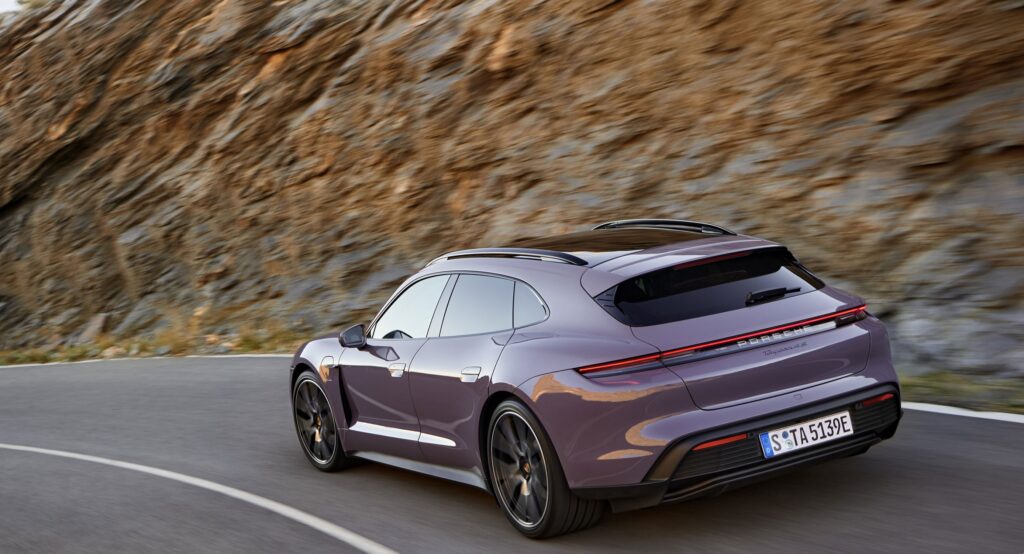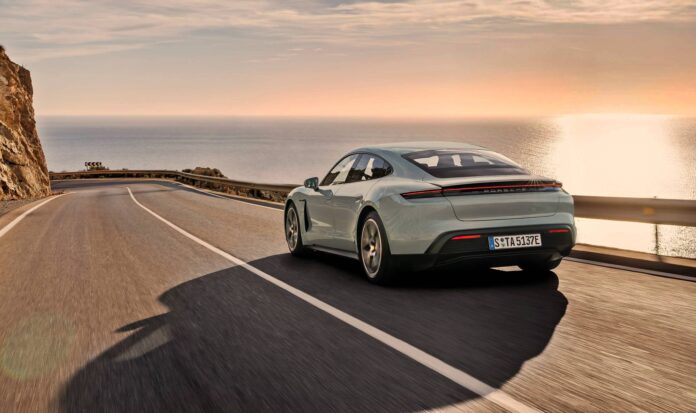Four years after being launched as Porsche’s first volume-produced fully electric sportscar, the Taycan has undergone significant updates across the range which consists of the sports sedan and the Taycan Cross Turismo which has off-road capability. In each case, 4 powertrain options are available, with rear or all-wheel drive.
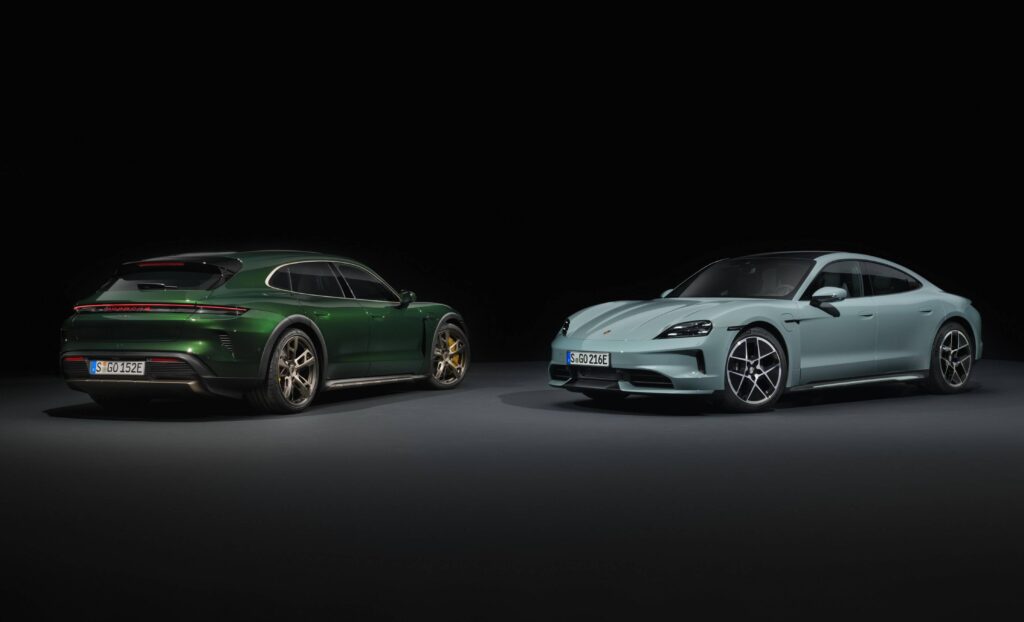
“We ushered in the new era of e-mobility with the Taycan at the end of 2019. It immediately proved to be a game-changer and innovative pioneer in the e-vehicle segment,” said Head of the model line, Kevin Giek.
“We are now continuing this success story with the extensively updated Taycan. The model line has reached new heights in terms of performance, with exceptional driving dynamics and driving pleasure. At the same time, we were able to significantly improve efficiency, range, day-to-day usability and comfort,” he said.
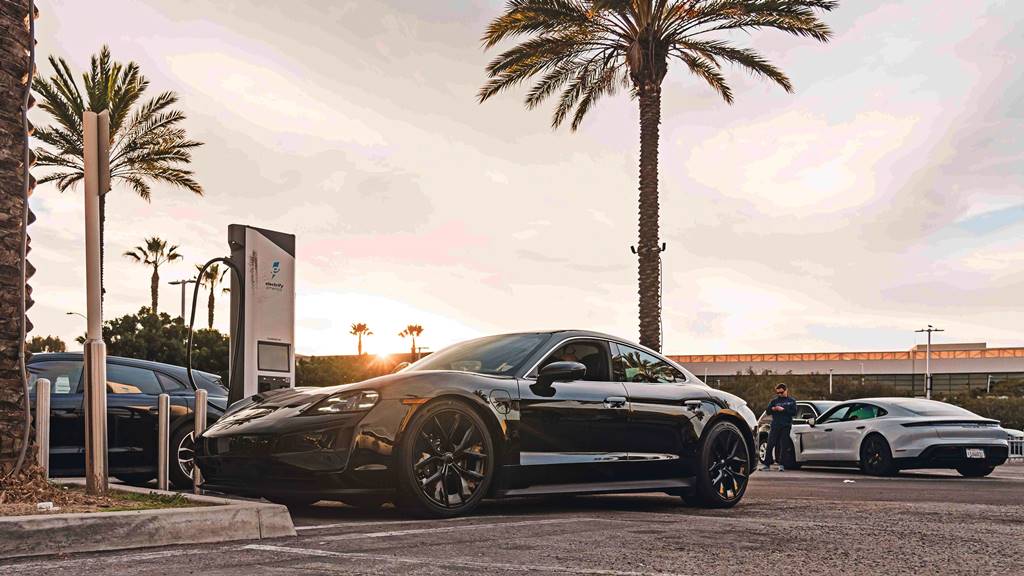
Giek said that development engineers and test drivers covered more than 3.6 million kms around the world prior to its market launch this year. To date, almost 150,000 units of the Taycan have been sold globally with the major markets being the USA, the UK, Germany and China.
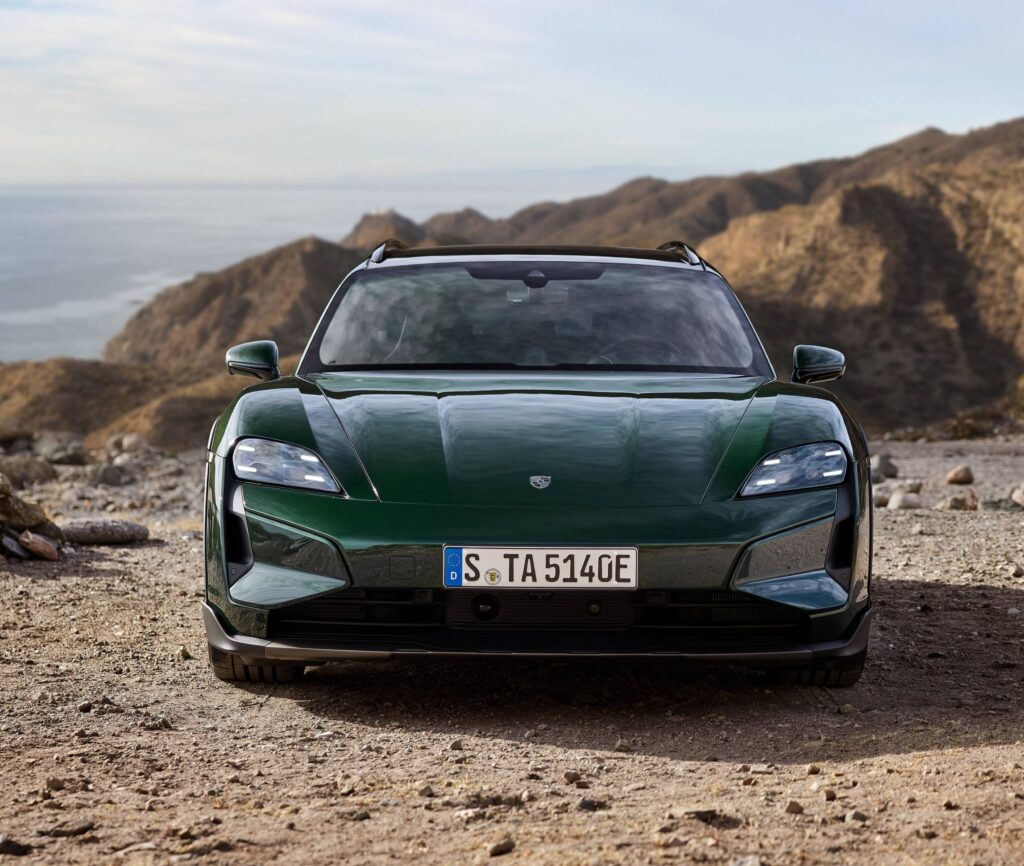
The 2024 Taycan’s design has been sharpened, with stronger differentiation for Turbo versions. The new headlights feature high-resolution HD matrix technology with detailed optics and now display the brand’s characteristic 4-point graphics at night.
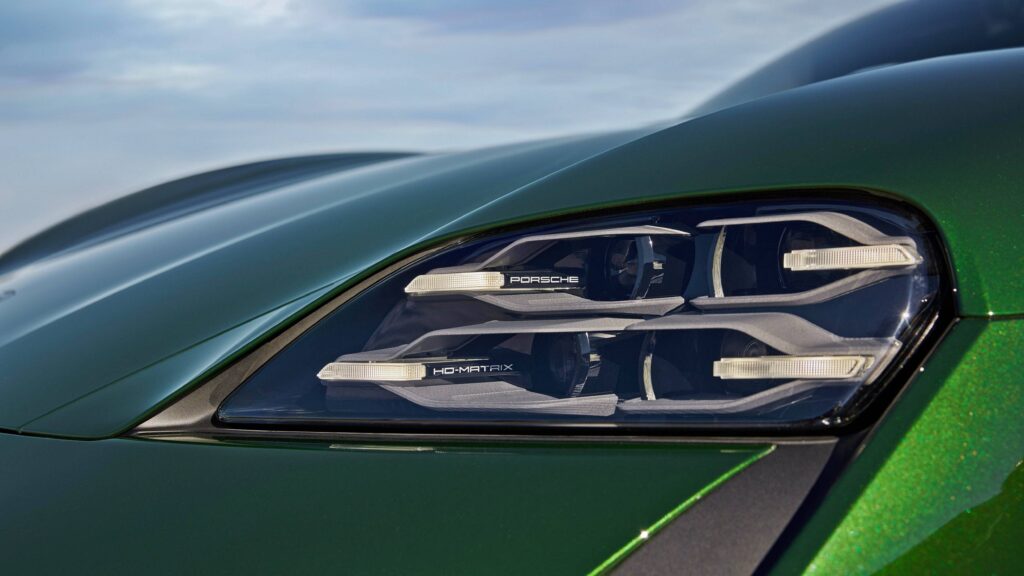
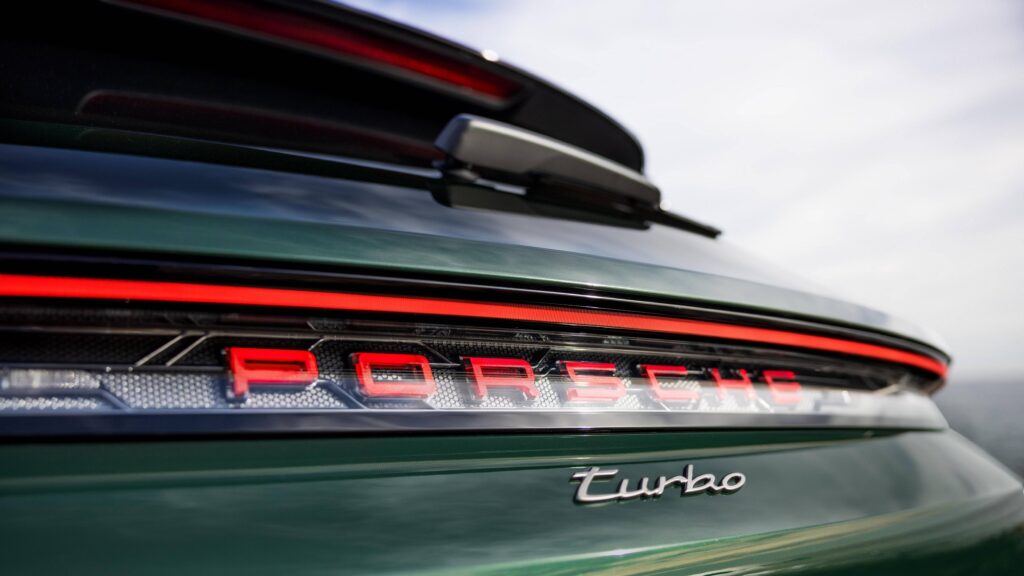
The Porsche logo in the rear light strip features a three-dimensional, glass-look design. An illuminated version of this is available for the first time, featuring welcome/leaving animations.
Owners will benefit functionally with the increased power giving quicker acceleration, extended range and faster charging. Examples of improved performance can be seen in the models at both ends of the range.
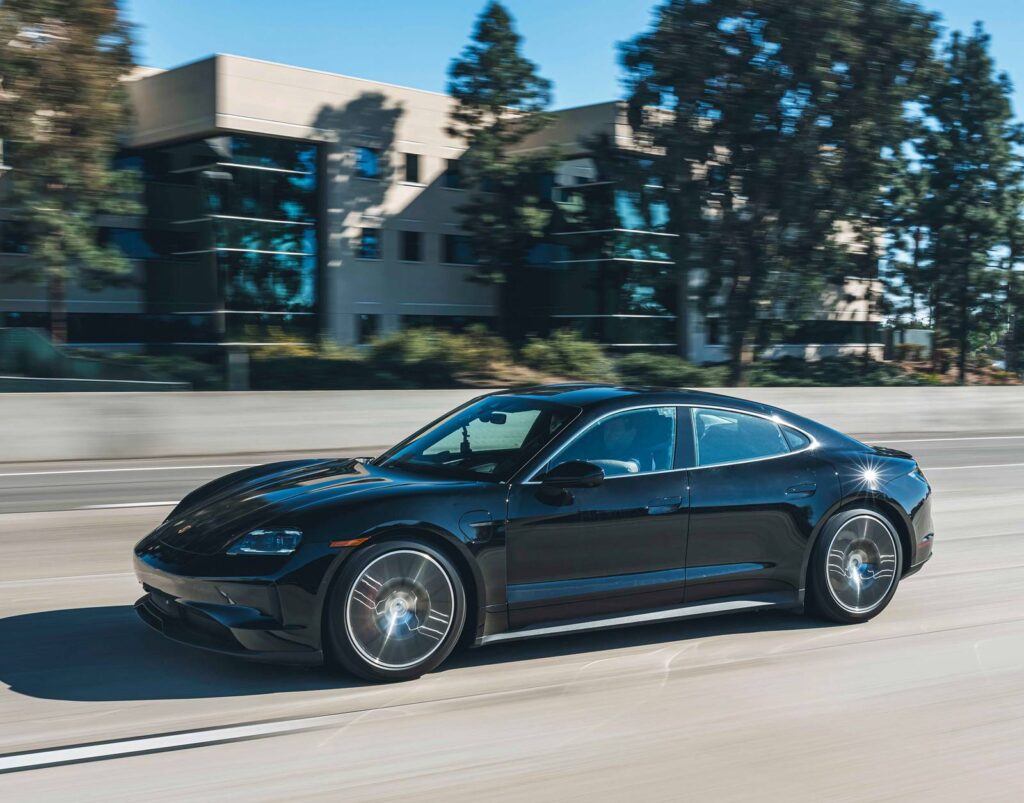
Higher output, quicker performance
The Taycan and Taycan Turbo S are now claimed to reach the 100 km/h mark from a standstill in 4.8 and 2.4 seconds, respectively. These are 0.6 and 0.4 seconds quicker than last year’s equivalent models. With the new push-to-pass function in the Sport Chrono package, a boost of up to 70 kW (depending on the mode) is available for 10 seconds at the touch of a button.
The increased acceleration rates are generally the result of higher system output. For example, the base Taycan delivers 60 kW more than before; for the Taycan Turbo S, it’s an additional 140 kW with Launch Control. This increases the system output of the top model to 700 kW/952 ps.
Over 35% more range claimed
Depending on the body variant and engine, Porsche says the Taycan’s range has increased to up to 678 kms. That’s 175 kms further or 35% more than last year’s capability.
Also, the updated Taycan not only requires fewer charging stops on long trips than its predecessor, but it also recharges faster. At 800V DC charging stations, for example, it can be charged at up to 320 kW – that’s 50 kW more than before.
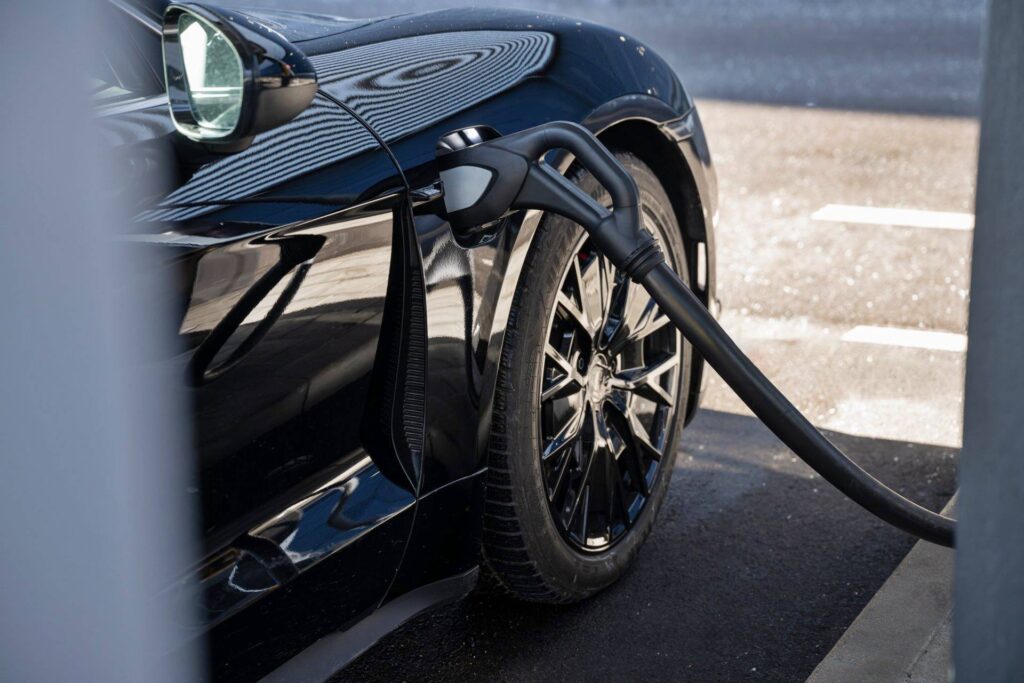
Faster charging
The fast-charging window of the new performance battery has been significantly expanded. This means that charging capacities of more than 300 kW can be sustained for up to 5 minutes, and very high charging capacities can be achieved more quickly, even at low temperatures.
While there are variables, generally, this can halve the time required to bring the battery capacity from 10% to an 80% (compared to the predecessor car). In the first-generation Taycan, the charging time from 10% to 80% at 15 degrees C. took up to 37 minutes. Under the same conditions, the updated Taycan takes just 18 minutes despite its larger battery capacity. The Performance Battery Plus now has a gross capacity of 105 kWh, increased from 93 kWh.
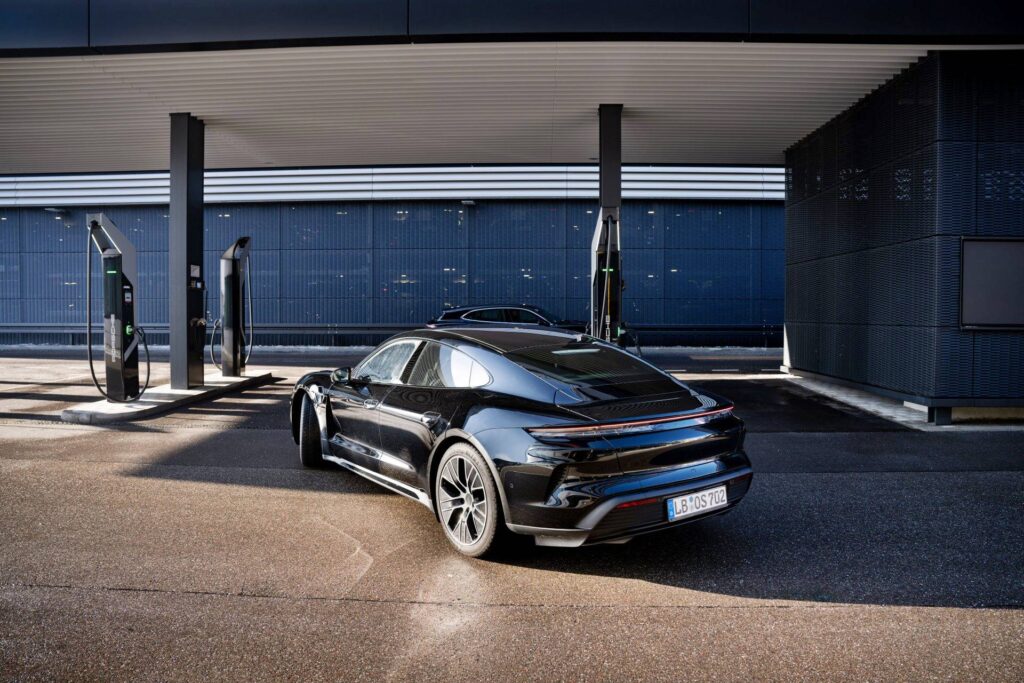
Various factors for improvements
The simultaneous improvement of performance and efficiency is down to a number of factors: an advanced powertrain with a new rear-axle motor with up to 80 kW more power than its predecessor on all models, a modified pulse inverter with optimised software, more powerful batteries, revised thermal management, a next-generation heat pump and a modified recuperation and all-wheel-drive strategy.
The maximum recuperation capacity during deceleration from high speeds has increased by more 30%, from 290 to up to 400 kW. All variants now come as standard with aerodynamically optimised wheels and reduced-rolling-resistance tyres. New 21-inch wheels and tyres were specially developed for this purpose.
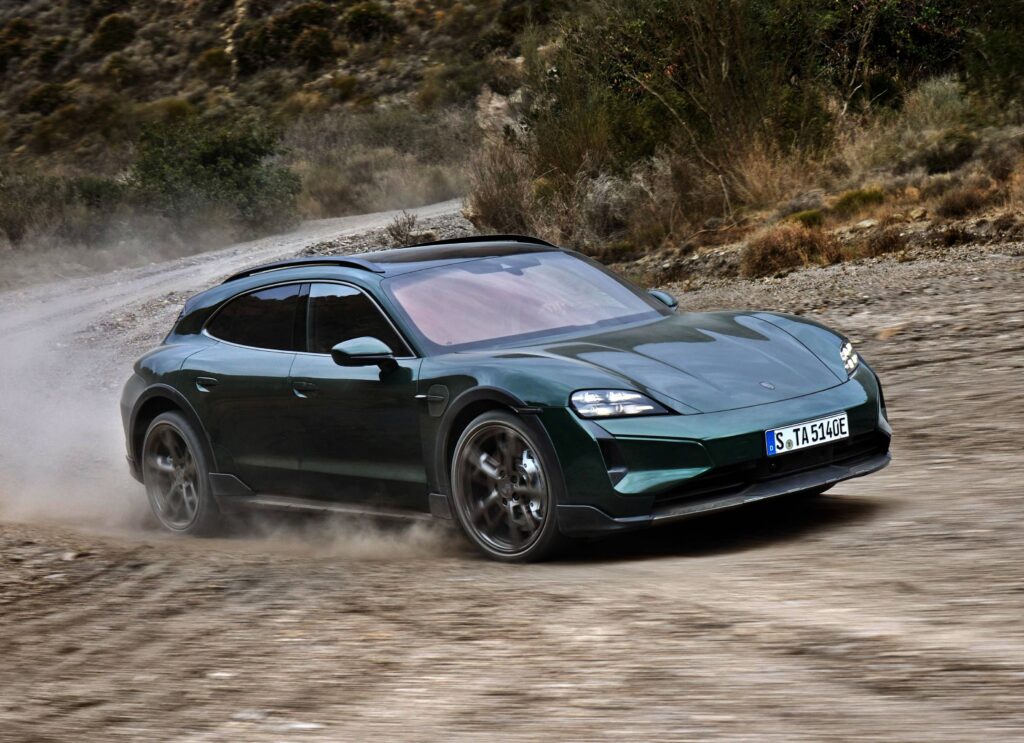
All updated Taycan models come with adaptive air suspension as standard. The new Porsche Active Ride suspension can be ordered as an option for the all-wheel drive versions. This system offers an unprecedented bandwidth between driving comfort and driving dynamics.
Less weight, even with more equipment
The standard equipment is even more extensive than before but depending on the model, the weight is up to 15 kgs less. Drive Mode switch and Power Steering Plus are now standard features, along with useful features such as a smartphone tray for wireless charging, and electric charging ports on the driver and front passenger sides.
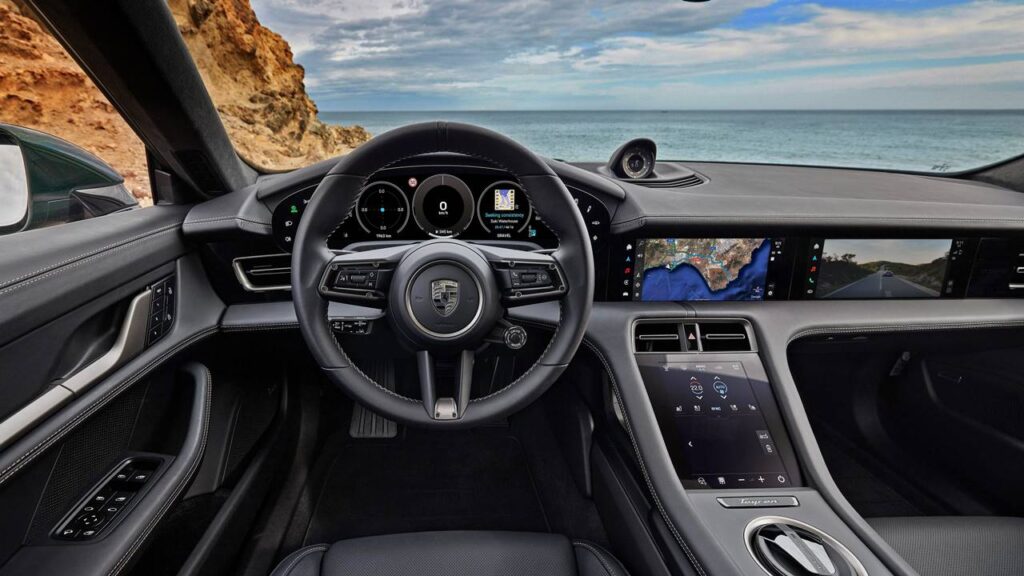
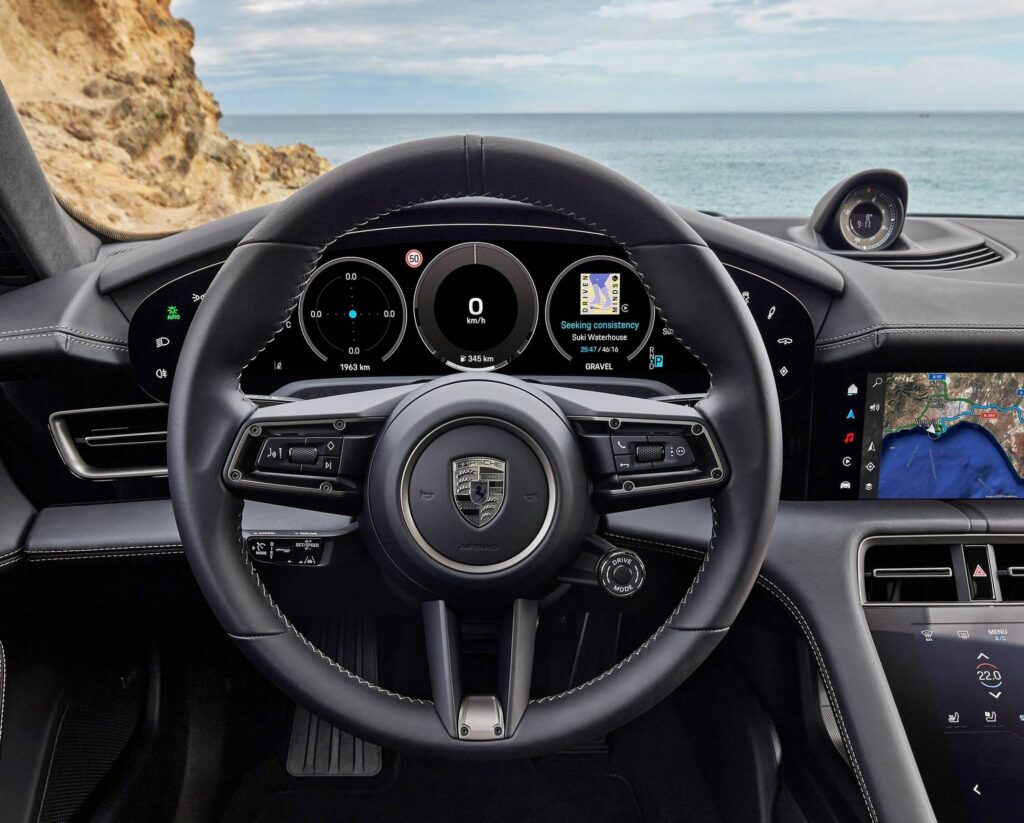
The instrument panel, central display and optional passenger display feature an optimised user interface with additional functions. The mode switch on the steering wheel now comes as standard. For Taycan models equipped with the Sport Chrono package and the Performance Battery Plus, there is a special push-to-pass button on the mode switch.
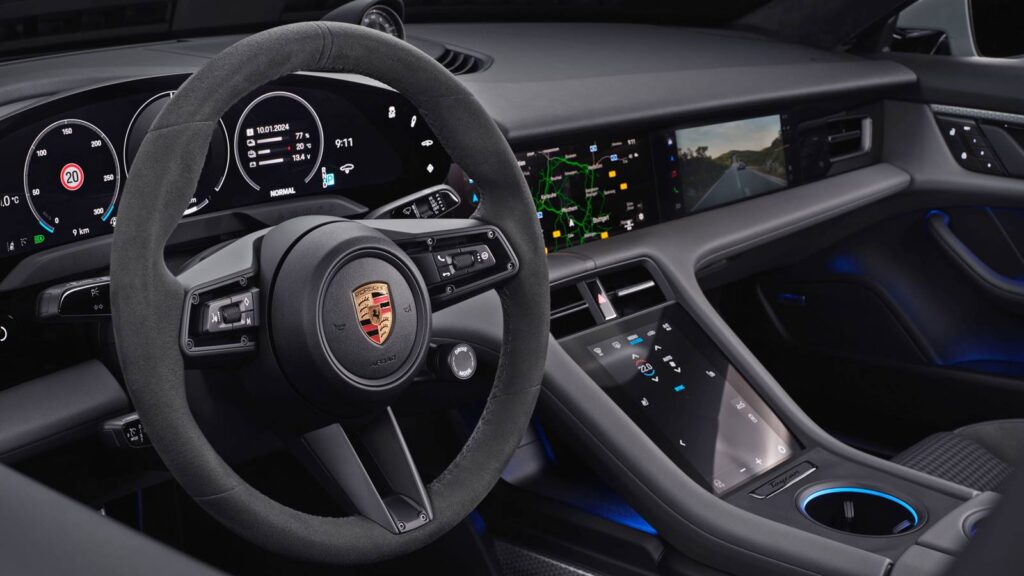
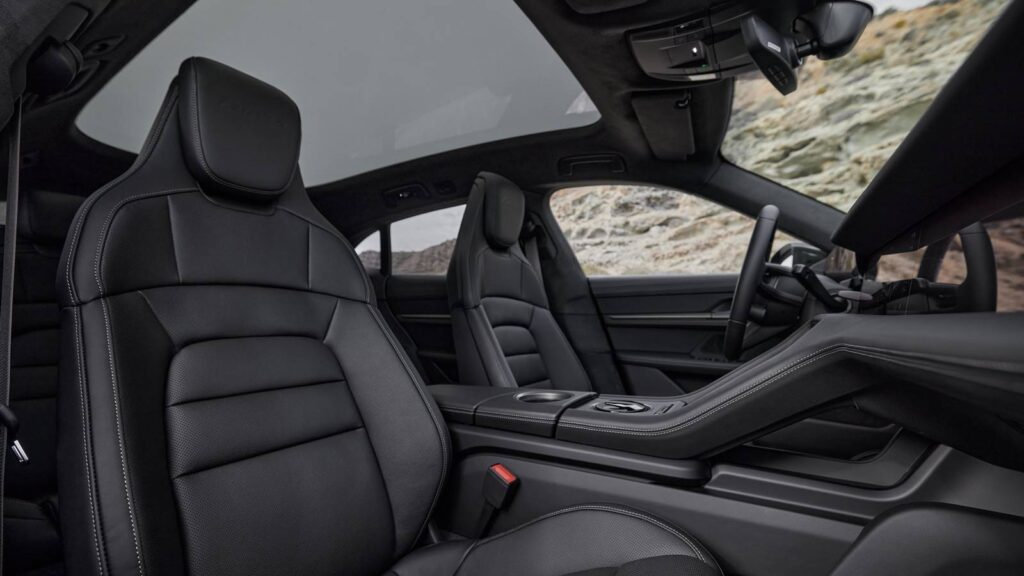
Using the new control lever on the left behind the steering wheel, control of the driver assistance systems is even more intuitive. Apple CarPlay has been more deeply integrated into the vehicle displays and functions. The new In-Car Video function enables video streaming on the central display and the passenger display.
